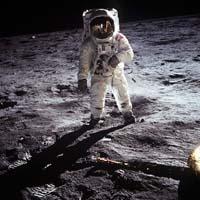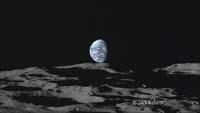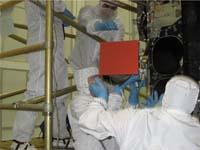Back to the Moon
2008/03/29 Galarraga Aiestaran, Ana - Elhuyar Zientzia

Since the 1969 Apollo 11 spacecraft was Ilargirated until the mid-1970s, the Moon received numerous visits from Americans and Russians. Since then, the Moon has only been marked by a few missions. Tell us: From 1976 to 1990 no satellite had been sent there. The mission of 1990 was carried out by the Japanese space agency, JAXA. Subsequently, NASA has carried out three missions around the Moon and only one of the European space agency, ESA.
Now, however, the space agencies look again and begin to approach the Moon. The probe sent by JAXA in October last year is already in the orbit of the Moon. It is called Kaguya (formerly called Selene) and its main mission is to make a precise map of the surface of the Moon.
Kaguya consists of three satellites, one of which has 13 scientific tools, including a high-definition television. With this, astronomers are receiving images of great detail and beautiful views. In addition, the satellite has tools to map the gravity of the Moon, as well as those necessary to identify and analyze the superficial and deep elements. Among other elements, Japanese scientists will look for icy water at the bottom of deep craters. Water is the key to sending humans to the Moon.
China, India, etc. United States, how not
But the Kaguya is not just around the Moon: In November 2007, China placed the Chang'e-1 satellite in the orbit of the Moon. The Chinese mission will last a year in which the satellite will collect three-dimensional images of the entire surface of the Moon, including the poles. Once again, the poles will be analyzed for the hope of water, as scientists believe that the chances of finding icy water there are greater than anywhere.
After Chang'e-1, the Chinese intend to send two more: Chang'e-2, with the aim of placing a vehicle on the surface of the Moon, and Chang'e-3, with that of sampling and grounding. Once these objectives are met, the Chinese space agency wants to continue collecting data and information to build a permanent base on the Moon.

Before building anything on the Moon, next month, India will also send a probe to the Moon. It is called Chandrayaan-1, the vessel of the moon, and carries, among other things, a tool to study the mineralogy of the surface of the Moon, an infrared spectrometer. In addition to the minerals, the probe will analyze the topography and all the data collected will be very useful to design the next mission. In fact, the Chandrayaan-2 mission is being prepared for 2010-2011. A robotic vehicle will be installed on the Moon to collect samples of bark, rocks and chemical analysis.
Eastern countries, therefore, have quite a few appointments with the Moon in the coming years. In any case, Westerners will not allow them to be alone with the Moon. NASA wants to send a probe into the orbit of the Moon in October. The aim is also to develop a comprehensive map of the Moon's surface, seeking resources such as water and building materials.
In addition, the probe carries on the outside a material similar to that of people's skin to analyze how radiation would affect humans. And in 2011, NASA will send two twin vessels to measure the field of gravity and seek answers to questions related to the formation of the Moon. With all this information, NASA wants to launch the Ilargiración de personas project.
Separately

Finally, the Russians also intend to visit the Moon for a long time. Moreover, they also want to build a base on the Moon. Before, however, they must make the Moon project a reality. Within this project it is intended to place 13 probes, some in the orbit of the Moon and others on the surface. For what? Like the previous ones, to make a precise map of the Moon, to know it in depth, to solve the mystery of its creation… and to seek water!
It seems that, like last century, each space agency prefers to go separately to share technology and knowledge. As they explain from NASA, it is better for everyone to develop their project and not depend on others; otherwise, if any country recedes or fails any instrument, the whole project runs the risk of being left without it. This is why they do not collaborate with others, except in a few respects. Other countries behave similarly.
Therefore, if one day they build bases on the Moon, it does not seem that their map is very different from that of Earth...
Published in Gara

Gai honi buruzko eduki gehiago
Elhuyarrek garatutako teknologia





